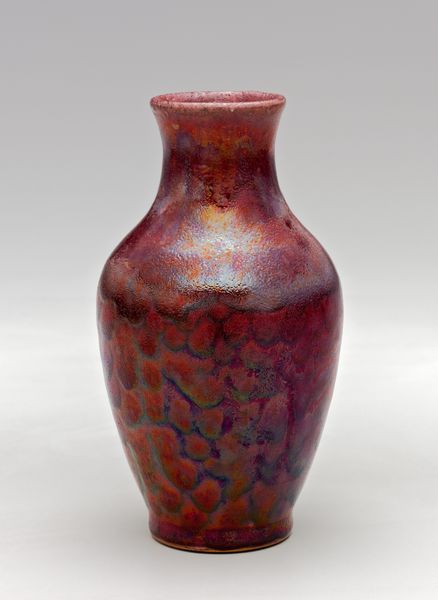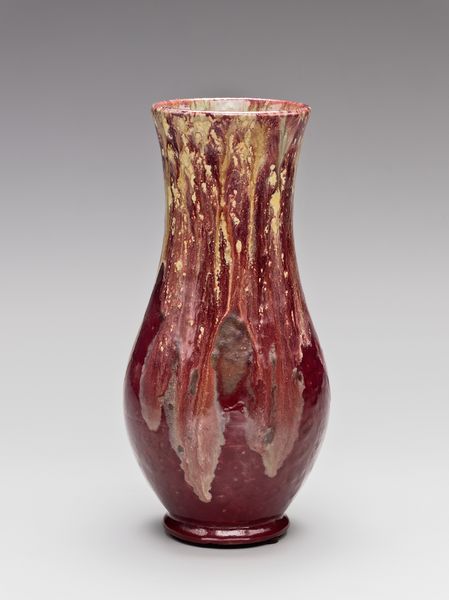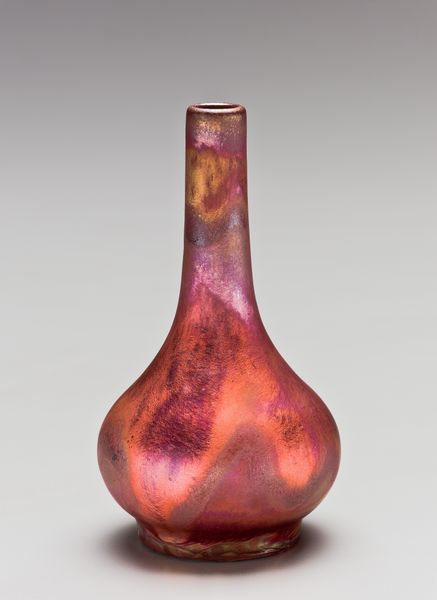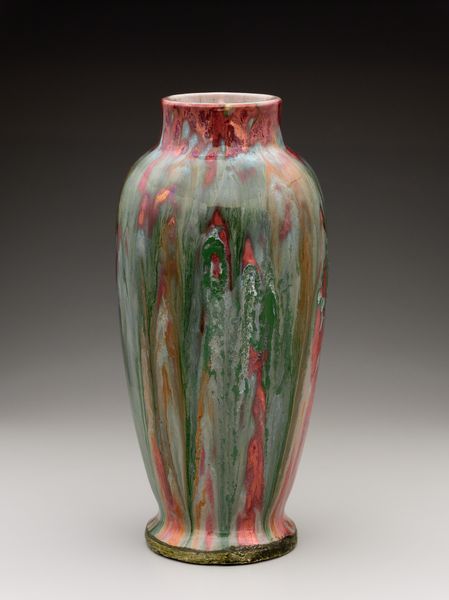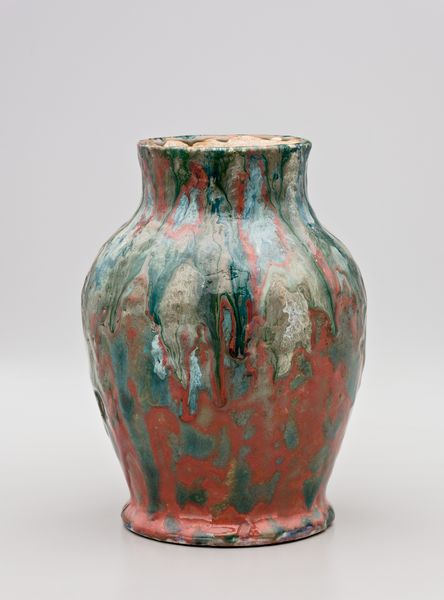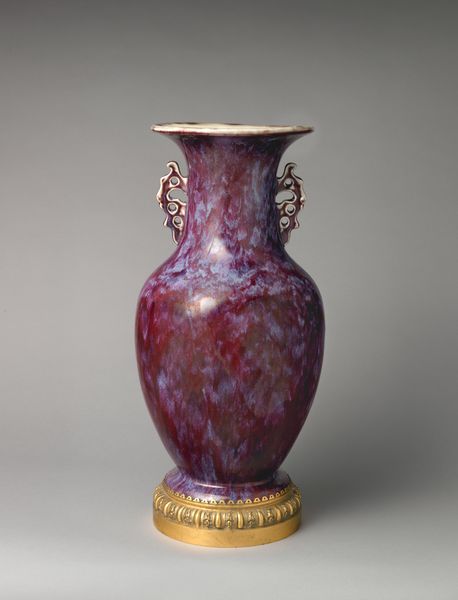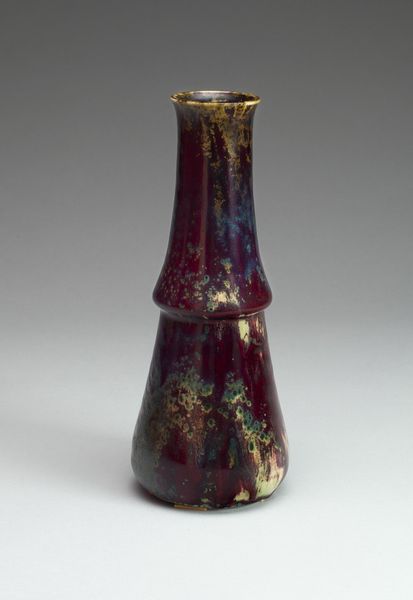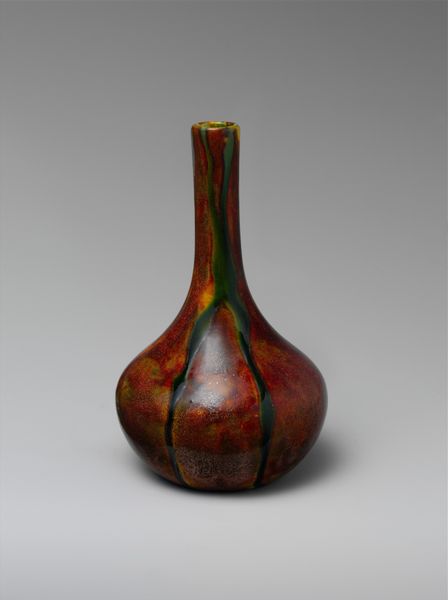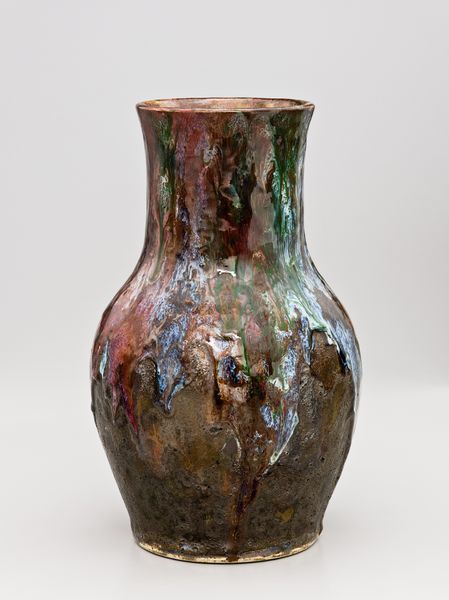
ceramic
#
ceramic
#
united-states
#
decorative-art
Dimensions: 12 13/16 x 4 15/16 in. (32.5 x 12.5 cm)
Copyright: Public Domain
This vase was made by Hugh Robertson, an American artist, from stoneware with a reduction-fired glaze. Looking at the iridescent, mottled surface of this vase, we can see Robertson’s engagement with the aesthetic and philosophical principles of the Arts and Crafts movement. This international movement flourished between 1880 and 1920, and championed the revival of handcrafted design in opposition to industrial manufacturing. Robertson was determined to rediscover the legendary ‘sang-de-boeuf’, or ‘oxblood’ glaze of the Chinese Kangxi period. His experiments with high-fired, copper-reduction glazes sought to elevate ceramics from a purely functional medium to the status of fine art. To fully appreciate Robertson’s vase, we need to consider the dynamics of artistic exchange and cultural appropriation. We can consider the colonial power dynamics involved in the artist’s pursuit of a Chinese glazing technique, and how this relates to the burgeoning field of Orientalism in the late 19th century.
Comments
No comments
Be the first to comment and join the conversation on the ultimate creative platform.
